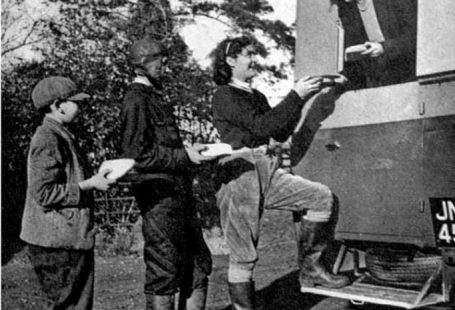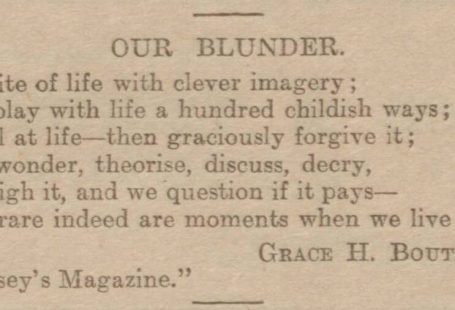Here at The Archive, as well as exploring pioneering figures of the past, and momentous moments from history, we like to celebrate the best of our collection’s local news, however bizarre, amusing and strange!
Illustrated Sporting and Dramatic News | 13 May 1959
With so many regional titles to be found on The Archive, there are many surprising and unusual stories to be found from around the country. And none more amazing is the story of Buttercup the cow, who was the first being on record to swim the length of the Mile Tunnel at Foulridge, Lancashire.
And diving into the pages of The Archive, it was soon became clear that Buttercup was not alone in her canal swimming exploits! So in this special blog, we will take a look at the story of Buttercup and eight other cows for whom canals proved a great draw.
Illustrated Sporting and Dramatic News | 19 July 1961
Don’t worry – no cows were harmed in the making of this blog post!
Want to learn more? Register now and explore The Archive
Foulridge, Lancashire – September 1912
On 28 September 1912 the Burnley Express reports on an ‘Extraordinary Event at Foulridge:’
For the first time on record the ‘Mile Tunnel’ a Foulridge, which is more than a mile in length, has been swum, the honour falling to a cow belonging to Mr. R. Brown, of Blue Slate Farm, Foulridge.
This ‘very valuable‘ cow was none other than Buttercup, who had jumped into the river after being ‘startled by some boys’ whilst she was grazing. ‘Frightened,’ she swam towards the Mile Tunnel.
Illustrated Sporting and Dramatic News | 9 June 1917
Built over five years from December 1792, the Foulridge Tunnel or the Mile Tunnel (so called because it is just under a mile in length) serves the Leeds and Liverpool Canal, and was opened in May 1796.
Nobody, no human nor animal, had ever swam the length of the tunnel before, not until the frightened Buttercup approached its opening in the September of 1912.
The Burnley Express picks up on the story:
A steam tug, towing an empty boat, also passed through the tunnel, but the crew were unaware of the presence of the animal.
Thankfully, Buttercup was not harmed, and ‘After swimming for two hours the cow emerged at the Colne end in a very exhausted condition, and had to be pulled out by boatmen.’ She was ‘found to be suffering from the low temperature of the water, but restoratives were administered and [she] recovered.’
A barge on the Leeds and Liverpool Canal | The Sphere | 28 January 1933
Local legend has it that Buttercup was revived with brandy or rum at local watering place the Hole in the Wall, although this was not reported in the Burnley Express article.
Swindon, Wiltshire – December 1904
Buttercup was not alone in her canal swimming exploits. Eight years before in Swindon, ‘in the neighbourhood of the Golden Lion Bridge, an ‘exciting scene‘ was once again witnessed.
North Wilts Herald | 2 December 1904
The North Wilts Herald, 2 December 1904, relates how the ‘unusual scene‘ developed:
Three cows were being driven from the Market to Mr. G. Wilton’s premises in Faringdon Street, and had successfully crossed the bridge, when one of the animals, startled by bystanders, rushed along the canal-towing path, followed by the man in charge.
Here’s what happened next:
Just as he got to its head, the cow turned to the side and jumped into the canal. His efforts to drive it out were unsuccessful, only resulting in the animal getting underneath the bridge.
The cow was thankfully rescued, as the bridge was raised and a rope placed around its horns, allowing it to be ‘drawn back the way it had gone and safely landed.’
The cow was not the only one who ended up in the canal in all the ‘commotion:’
In the excitement a young man, who had been taking an active part in the work of the rescue, fell into the canal, and was thoroughly drenched before getting to land.
Yiewsley, Middlesex – January 1914
Meanwhile, in early January 1914 the inhabitants of Yiewsley, Middlesex, were witness to ‘an exciting canal swim by a wayward cow.’
The Uxbridge & W. Drayton Gazette reports how this poor wayward cow’s swim was witnessed ‘by a large crowd.’ The exciting events were played out as follows:
The cow was being driven into Mr. Week’s yard, by the canal, but the animal apparently desired a swim, for it plunged into the water, and swimming under the bridge, proceeded quite a long way up the canal.
Uxbridge & W. Drayton Gazette | 10 January 1914
Despite many suggestions being ‘made as to how it should be got out,’ the cow was an independent one, as the ‘animal solved the difficulty’ itself ‘by clambering up the bank’ quite nonchalantly. ‘Having done what it wanted,’ it then went ‘quietly into the yard.’
Runcorn, Cheshire – March 1915
Another canal swimming cow – this time in Runcorn, Cheshire – was to cause more trouble than its counterpart from Yiewsley.
The Chester Chronicle, 13 March 1915, reports on this ‘Exciting Incident at Runcorn:’
There were scenes of great excitement in the neighbourhood of Top Locks, Runcorn, on Monday afternoon. Shortly after one o’clock two cows belonging to Mr. T. Bell, butcher, of Greenway-road, were being driven along High-street in the direction of the slaughter house in Percival-lane by two youths. When opposite the Top Locks Warehouse of the Bridgewater Canal Co. one of the animals dashed into the entrance, and jumped into the warehouse, the entrance of which is three feet off the ground, and on level with the bottom of the carts and lorries which back up to the entrance for loading.
Finding itself trapped, the cow then recoursed to the canal:
Meeting with opposition here it returned to the door, jumped down again into the street, and the two animals then took the towing path of the canal, and careered madly along until they reached the Waterloo Bridge. Here the towing path narrows considerably, and, as a result, one of the animals dashed into the water.
Bridgewater Canal, Runcorn | Illustrated London News | 29 January 1966
The spot where the cow went into the canal was approximately 100 feet wide, ‘giving entrance to both lines of locks as well as the dry dock.’ Meanwhile, the cow made ‘straight across’ the canal, making ‘good progress, but when near the tugs on the opposite side it became very exhausted.’
Luckily, men on board the tugs were able to secure the cow, and so:
Then was seen the strange spectacle of a tug crossing the canal with an exhausted cow in tow. Ropes were obtained, and by means of the special steps used for rescuing horses which have managed to get into the water, the cow was safely brought to terra firma.
But the commotion was not yet over. The poor cow, once ashore, ‘appeared to go mad, and rushed about in all directions, dragging its captors with it, and causing hundreds of spectators to scatter all over the place.’
Eventually, the cow was subdued. And after the incident, one spectator remarked how ‘It was a lively quarter of an hour.’
Langley Mill, Derbyshire – October 1927
Events would repeat themselves over a decade later in the village of Langley Mill, Derbyshire. The Nottingham Journal reports how a cow was being driven through the village, when it too ‘got out of control and jumped into the canal.’
Nottingham Journal | 31 October 1927
This provoked ‘great excitement’ amongst the bystanders, before ‘it was eventually roped and pulled out and taken to its new owner at Craisley.’
Gloucester – April 1932 & October 1936
More excitement was to be witnessed in the city of Gloucester, where we found incidents of two cows swimming the canal there in the 1930s.
The Gloucestershire Echo, 2 April 1932, describes the utter pandemonium that a loose cow caused in Gloucester Market:
A frightened cow ran out of Gloucester Market to-day, and, causing women shoppers to scatter in all directions, raced to the docks and plunged into the canal.
One can just imagine the chaos, as the cow ran from the marketplace to Southgate Street, all the while ‘chased by a crowd.’ From Southgate Street it reached the entrance to the docks, ‘where a woman had to jump clear to escape.’
Gloucester Docks | Illustrated London News | 21 July 1923
Running around the warehouses, the cow made a great leap and ‘jumped from a wharf, over a boat, into the water.’ It then ‘struck out for Llanthony Bridge, pursued by men in a boat, who succeeded in lassoing its horns.’
It was eventually removed from the canal by means of a crane.
Four years later, another cow fancied a swim (or indeed two swims) in the Gloucester and Sharpness Canal. The Gloucestershire Echo, 8 October 1936, reports how:
Two cows which were being driven through Gloucester parted company for a short while when one of them took a swim in the canal. After the animal had taken the plunge it took all efforts of the drover and his assistants to haul the cow ashore, but the animal, evidently fond of this newly-found sport, jumped in again. It was eventually hauled out and this time driven off with the other cow.
Gloucestershire Echo | 8 October 1936
Little Braunston, Northamptonshire – March 1951
In March 1951 cows were branching out from canals, and moving on to reservoirs! The Northampton Mercury, 30 March 1951, reports how:
A cow, bought recently by Mr. Fred Green, of Ventnor Lodge Farm, Little Braunston, swam first across the canal and then a hundred yards across a reservoir.
The canal at Braunston was home to a junction between the Oxford and Grand Union Canals, and was, as such, an important part of the canal network.
The Grand Union Canal at Braunston | The Tatler | 4 June 1958
Meanwhile, the escapee cow was ‘found later three miles away at Nethercot’ – some distance for it to have travelled!
Elland, West Yorkshire – September 1954
Our final canal swimming cow hails from Elland, West Yorkshire. It hit the headlines in the Halifax Evening Courier, 28 September 1954:
Wandering form its field yesterday afternoon, a heifer fell in the Calder and Hebble Canal at Elland and swam 200 yards before it was rescued by members of Elland Fire Brigade.
Halifax Evening Courier | 28 September 1954
The cow had been spotted ‘in the water by employees at Elland gasworks,’ who acted promptly and called the local fire brigade:
The firemen lifted the heifer out of the canal with lengths of hose and returned it to its owners, Messrs. J.S. Morton and Sons, of Elland Hall.
Although the heifer ‘was a little frightened,’ it was thankfully unharmed.
We hope you enjoyed our foray through these local new stories, providing insight into the excitements of everyday life, and how, it seems, some cows seem to enjoy swimming in canals!
What discoveries will you make in the pages of our Archive? Get your research started today!

















